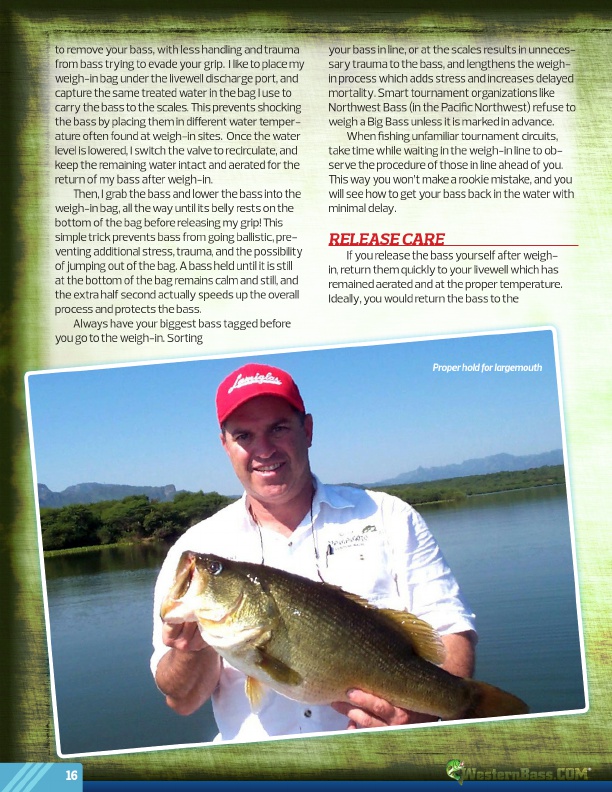
to remove your bass, with less handling and trauma from bass trying to evade your grip. I like to place my weigh-in bag under the livewell discharge port, and capture the same treated water in the bag I use to carry the bass to the scales. This prevents shocking the bass by placing them in different water temper- ature often found at weigh-in sites. Once the water level is lowered, I switch the valve to recirculate, and keep the remaining water intact and aerated for the return of my bass after weigh-in.
Then, I grab the bass and lower the bass into the weigh-in bag, all the way until its belly rests on the bottom of the bag before releasing my grip! This simple trick prevents bass from going ballistic, pre- venting additional stress, trauma, and the possibility of jumping out of the bag. A bass held until it is still at the bottom of the bag remains calm and still, and the extra half second actually speeds up the overall process and protects the bass.
Always have your biggest bass tagged before you go to the weigh-in. Sorting
your bass in line, or at the scales results in unneces- sary trauma to the bass, and lengthens the weigh- in process which adds stress and increases delayed mortality. Smart tournament organizations like Northwest Bass (in the Pacific Northwest) refuse to weigh a Big Bass unless it is marked in advance.
When fishing unfamiliar tournament circuits, take time while waiting in the weigh-in line to ob- serve the procedure of those in line ahead of you. This way you won’t make a rookie mistake, and you will see how to get your bass back in the water with minimal delay.
RELEASE CARE
If you release the bass yourself after weigh- in, return them quickly to your livewell which has remained aerated and at the proper temperature. Ideally, you would return the bass to the
Proper hold for largemouth
16 ®